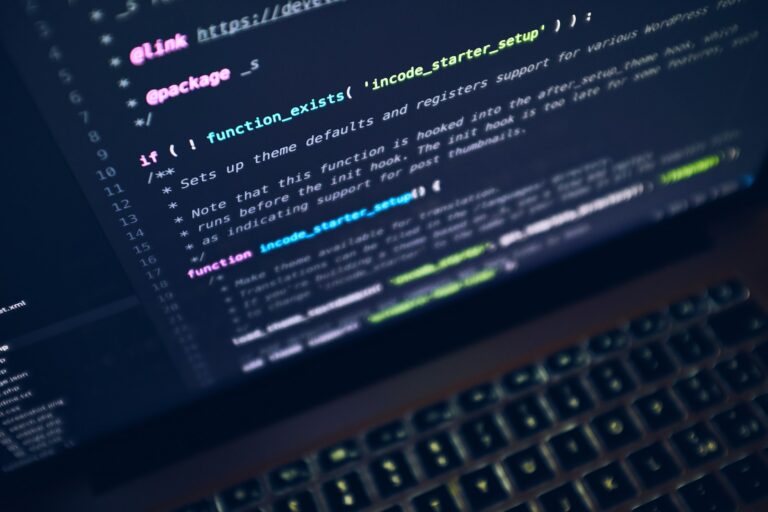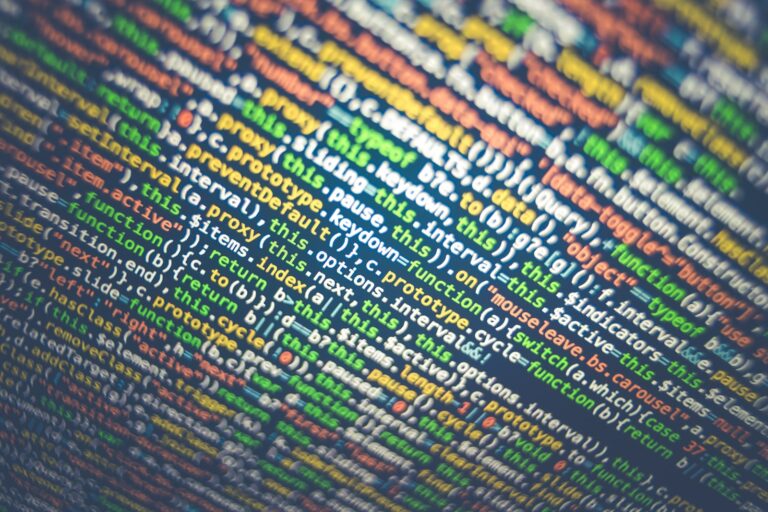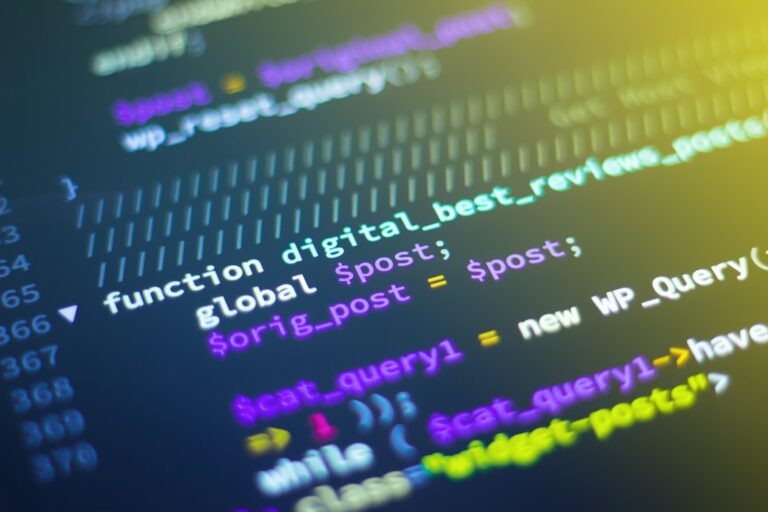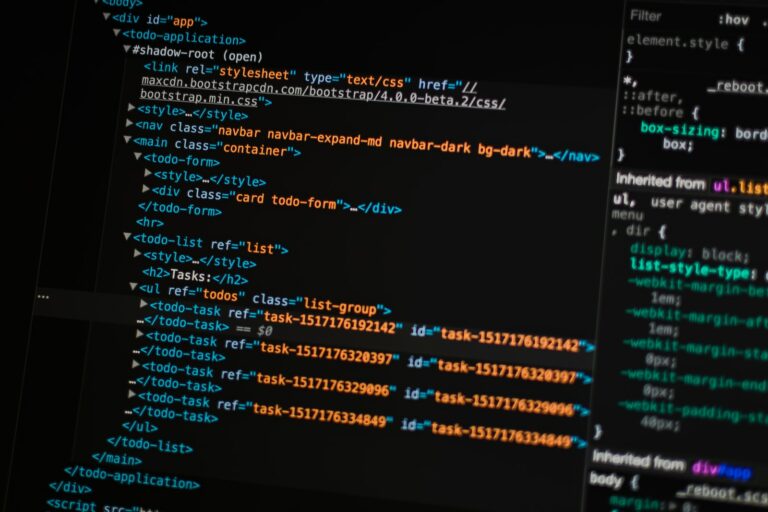Python is a high-level programming language that provides powerful tools for developers to create efficient and effective code. Understanding the scope and namespace in Python is crucial for writing programs that work as intended.
Python scope refers to the area of a program where a variable or function is accessible. This scope can be local or global, and it’s important to understand the rules and hierarchy of scope in Python to avoid errors and make your code more readable.
Key Takeaways:
- Python scope determines the area of a program where a variable or function is accessible.
- Scope in Python can be local or global, and it’s important to understand the rules and hierarchy of scope in Python to avoid errors and make your code more readable.
The Basics of Scope in Python
Understanding scope in Python is essential in learning how variables interact with different parts of the code. It is crucial to understand that variables have different scopes depending on where they are defined.
In Python, there are two basic types of scopes:
| Scope | Description |
|---|---|
| Local Scope | Variables defined inside a function |
| Global Scope | Variables defined outside a function and can be accessed from anywhere in the code |
When a variable is defined inside a function, it is only accessible within that function. This is known as local scope. On the other hand, variables that are defined outside a function can be accessed anywhere in the code, and they are called global variables with global scope.
Let’s take a look at an example:
Note: “print()” statements are used to display output to the console.
Here, we define a variable “x” outside the function, and another variable “y” inside the function.
The function prints the value of “y” and then attempts to print the value of “x”.
However, since “x” is not defined inside the function, it raises an error.
x = 10
def my_function():
y = 5
print("The value of y is:", y)
print("The value of x is:", x) # This will raise an error since x is not defined inside the function
my_function()
The output of the code above will be:
The value of y is: 5 NameError: name 'x' is not defined
It is important to note that variables with the same name can exist in different scopes. When referencing a variable that exists in both local and global scopes, the local variable takes precedence over the global variable.
In the next section, we will discuss nested scope in Python.
Nested Scope in Python
Python supports nested scopes where you can define a function inside another function. Each function block introduces a new local scope that can access variables from an outer scope, but the outer scope cannot access the local variables.
The nested scope first looks for variables in its local scope, then its parent’s local scope, and so on up the chain of nested functions until it reaches the global scope. If the variable is not found in any of the scopes, then Python raises a NameError.
Examples of Nested Scope
Let’s look at an example to understand how nested scope works in Python:
def outer():
x = 1def inner():
y = 2
print(x + y)inner()
In this example, the inner() function is defined inside the outer() function. The inner() function can access the x variable defined in the outer() function, but the outer() function cannot access the y variable defined in the inner() function.
You can also see that the x variable is defined in the outer scope, while the y variable is defined in the inner scope. When the inner() function is called, it prints the sum of these two variables.
Here’s another example:
x = 1
def outer():
x = 2def inner():
x = 3
print(x)inner()
outer()
print(x)
In this example, we define a global variable x with the value of 1. Then we define the outer() function, which defines its own local variable x with the value of 2. Next, we define the inner() function inside the outer() function, which defines its own local variable x with the value of 3.
When the inner() function is called, it prints the value of its own local variable x, which is 3. The outer() function is also called, which has its own local variable x with the value of 2, but this variable is not printed. Finally, we print the global variable x, which has the value of 1.
Python Scope Resolution
As we’ve seen, Python uses a set of rules to determine the scope of a variable, whether it is local or global, and how it is accessed. But what happens when we have variables with the same name in different scopes? This is where scope resolution comes in.
Python follows a specific order when searching for the value of a variable. First, it looks in the local scope of the current function. If it doesn’t find it there, it moves to the next outer scope and continues the search. This process continues until it reaches the global scope. If the variable is still not found, Python will raise a NameError.
Let’s take a look at an example to better understand this process:
x = 10 def func(): x = 5 print(x) func() print(x)
This code defines a variable x in the global scope with a value of 10. The function func also defines a variable x with a value of 5 in its local scope. When we call func, it prints out the value of x in its local scope, which is 5. However, when we call print(x) outside of the function, it prints out the value of x in the global scope, which is 10.
It’s important to note that if we want to modify a global variable inside a function, we need to use the global keyword. This tells Python that we want to use the global variable instead of creating a new local variable with the same name. Here’s an example:
x = 10 def func(): global x x = 5 print(x) func() print(x)
In this case, we use the global keyword to tell Python to use the global variable x instead of creating a new local variable. When we call func, it prints out the value of x in its local scope, which is 5. However, when we call print(x) outside of the function, it now prints out the updated value of x, which is 5.
Managing Variable Scope in Python
While working with Python, it is important to understand how variable scope works to avoid errors in your code. In Python, variables have a scope that determines where they can be accessed. Here are some ways you can manage variable scope in Python:
Using Global Variables
Global variables can be accessed from anywhere in the code, but they can also lead to unintended consequences if not used carefully. To define a global variable, you can use the global keyword followed by the variable name:
global variable_name
Here’s an example:
global_variable = "I am global"
def print_global_variable():
print(global_variable)
def change_global_variable():
global global_variable
global_variable = "I am modified"
print_global_variable()
change_global_variable()
print_global_variable()
The output will be:
I am global I am modified
Using the Nonlocal Keyword
The nonlocal keyword is used to access variables from an outer scope in a nested function. It can be used to modify variables in the outer scope, but it cannot create new variables.
Here’s an example:
def outer_function():
outer_variable = "I am outer"
def inner_function():
nonlocal outer_variable
outer_variable = "I am modified"
inner_function()
print(outer_variable)
outer_function()
The output will be:
I am modified
Using Function Parameters
One way to manage variable scope is to pass variables as parameters to a function. This way, the variables are only modified within the function scope.
Here’s an example:
def modify_variable(variable_name):
variable_name = "I am modified"
print(variable_name)
my_variable = "I am global"
modify_variable(my_variable)
print(my_variable)
The output will be:
I am modified I am global
By understanding variable scope and using these methods to manage variables in Python, you can avoid errors and ensure your code is running efficiently.
Understanding Namespace in Python
In Python, a namespace is a system that ensures all identifiers (such as variable names, function names, etc.) are unique and can be used without the risk of name clashes. In other words, a namespace is a collection of identifiers and the values they refer to. When you create a variable or define a function in Python, it is stored in a namespace. Python has several namespaces, including built-in, global, and local namespaces.
The built-in namespace is automatically loaded when Python starts up and contains names of commonly used Python functions and objects. The global namespace contains all the names that are defined in the current module. Finally, the local namespace contains all the names that are defined within a particular function or block of code.
It’s essential to understand the concept of namespaces to avoid naming conflicts while coding. For instance, if you define two variables with the same name in the same namespace, you will encounter errors when running the program.
Python Namespace Lookup
Python uses a specific mechanism to find the values of a particular identifier in the code using a process called namespace lookup. When you reference a name in Python, it goes through the following namespaces in a specific order:
- The local namespace
- The global namespace
- The built-in namespace
If the identifier is not found in any of the namespaces, a NameError is raised.
Distinguishing Namespace and Scope
While namespace and scope are related concepts, they are not interchangeable. Scope refers to the visibility of a variable, whereas namespace refers to the context in which the variable is defined. For example, you can create a variable with the same name in two different scopes, and they won’t conflict with each other because they belong to different namespaces.
It’s worth noting that Python also supports the concept of nested namespaces, where namespaces can be defined within other namespaces. This is often used in object-oriented programming where a class has its own namespace, and objects created from that class have their own namespaces as well.
Understanding namespaces is crucial in Python programming as it helps to avoid naming conflicts and organize code. It’s essential to have a solid grasp of scopes and namespaces to write efficient and robust Python code.
Python Scope Hierarchy
When it comes to understanding scope in Python, it’s important to understand the hierarchy of scopes. The hierarchy starts with the built-in scope, followed by the global scope, and then the local scope.
The built-in scope contains all of the built-in functions and modules that are available in Python. This scope is automatically loaded when you start a Python interpreter, and it is always available.
The global scope contains all of the variables and functions that are defined outside of a function or class. These variables and functions are accessible from anywhere within your program, but they can be overridden within a local scope.
The local scope contains all of the variables and functions that are defined within a function or class. These variables and functions are only accessible within that function or class, and they are not visible from outside.
Python Scope Hierarchy Example
Let’s take a look at an example to illustrate the scope hierarchy in Python:
x = "global"
def foo():
x = "local"
print(x)
foo()
print(x)
In this example, we define a global variable x and a function foo that defines a local variable x. When we call the function foo, it prints the value of the local variable x, which is “local”. Then, when we call print(x) outside of the function, it prints the value of the global variable x, which is “global”. This illustrates the concept of scope hierarchy in Python.
It’s important to understand the scope hierarchy in Python in order to properly manage your variables and functions and avoid any unexpected behavior in your code.
Conclusion
In conclusion, understanding scope and namespace is essential for any Python developer. With a solid understanding of these concepts, you can write cleaner and more efficient code that is easier to debug and maintain.
Remember that scope refers to the visibility and accessibility of variables, while namespace refers to the container of all the names used in a Python program. Understanding the scope hierarchy and resolution is crucial to avoid unwanted bugs and unexpected behaviors.
In addition, managing variable scope is also important to make sure that variables are defined in the right scope and not accidentally overwritten or used improperly.
Lastly, keep in mind that Python has rules and guidelines for resolving scope and namespace conflicts, such as the LEGB rule. With these concepts and rules in mind, you can become a more effective Python developer and produce high-quality code.
Thank you for reading and happy coding!







